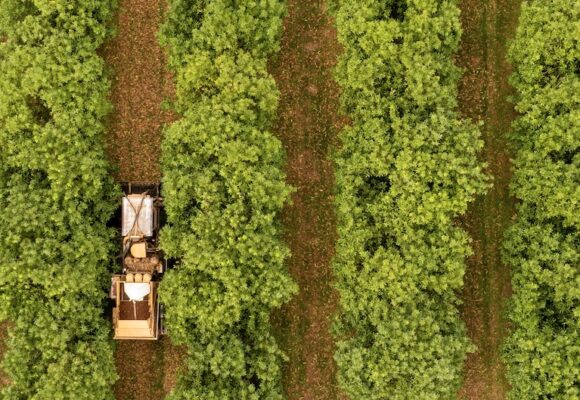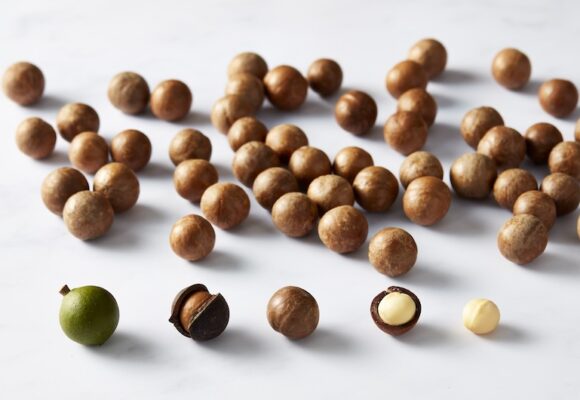Scientists and farmers are racing the clock to crack the secrets of Australia’s finest nut following the early arrival of this year’s macadamia blossoming.
The blossoming, the first stage in the macadamia growing cycle, gives researchers a short window to undertake new research into pollination to boost the size and quality of the macadamia harvest. Australia is the world’s largest commercial producer of macadamias, contributing more than 30 per cent of the global crop.
During this year’s blossoming, scientists and pollination experts are working with more than 60 leading Australian macadamia farms on research including self- and cross-pollination techniques as part of an extensive research and development program for Australia’s biggest home-grown food export.
Abnormal weather conditions meant blossoming began earlier than usual this year, signalling a longer growing season with the potential to assist to make a promising harvest for Australia’s macadamia farmers if favourable conditions continue.
Less than 1% of flowers become nuts. Each raceme of 40 to 50 flowers produces between four and 15 ‘nutlets’, which eventually ripen into nuts.
Despite originating in Australian rainforests more than 60 million years ago, maximising macadamia harvests through advances in pollination techniques has proved a tough nut to crack for the young but fast growing commercial industry, exporting approximately 70% of all macadamias to more than 40 countries globally.
According to pollination scientist and research lead Brad Howlett (Plant and Food Research NZ), although bees may hold a key there is no “one-size-fits-all” answer, with the effectiveness of pollination methods largely depending on the breed of the tree.
“While we are in the early stages of our study, initial findings have all alluded to the fact that both honey and stingless bees do add a certain degree of value to pollination, regardless of the type of macadamia trees,” Howlett said.
Cross-pollination (using bees and insects) has also delivered success, with one grower reporting an increase in product using cross-pollination techniques, compared to self-pollination.
Australian Macadamia Society CEO Jolyon Burnett said: “It is an exciting time and a spectacular sight for macadamia growers, seeing their trees in bloom. The timing of this year’s flowering bodes well for a long, strong growing season if favourable conditions continue. The outlook for the industry is just as bright, as farmers and scientists work together to develop new ways to boost production of our fast-growing industry.”
Australia’s macadamia farms produce about 50,000 tonnes of the nut annually, with most grown in the sub-tropical climates of northern New South Wales and south-eastern Queensland.
The research project described in this media release has been funded by Horticulture Innovation Australia Limited using the macadamia industry levy and funds from the Australian Government.


